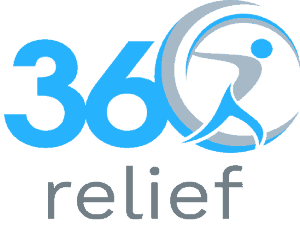
Make This Christmas Pain-Free: 10% Off on Supportive Wear!
Holidays are coming, which means that let’s welcome them with joy, laughter, and, of course, some comfort! At 360 Relief,

Table of Contents
ToggleThe Laver Cup is an international men’s tennis team tournament played between two teams: Team Europe and Team World. The Team World consists of players from all over the world except Europe. The tournament is usually held annually and was first played in 2017. It is an indoor, hard-court tennis tournament that is usually played two weeks after US Open. However, the tournament venue rotates between various host cities. The 2022 tournament is named as the Laver Cup London 2022 and will be played at The O2 in London. The following are the further details of the announced tournament:
Tournament Dates: The tournament will be held between September 23 and 25, 2022.
Tournament Venue: The tournament will be organised at The O2 in London, England, UK.
Tournament Schedule: The tournament will take place under the given schedule:
Indeed, tennis is one of the most exciting sports played throughout the world. Several tennis tournaments are globally organised yearly. Tennis enthusiasts become happy to watch the live tennis tournaments, and it also encourages them to organise and play tennis tournaments at their own places like school tournaments, workplace tournaments, and others. Remember that tennis can bring you injuries regardless of your professionality. Injuries are possible in both: professional and amateur tennis players. However, studies have shown that elite players are more prone to injuries compared to amateur players. For example, injuries rate in elite players and amateurs account for 72.26% and 27.40%, respectively.
Another study has shown that most tennis injuries occur in the lower extremities. The injury rate in junior competitive players ranges from 0.6 to 1.7 per 1000 hours of playing tennis. On the other hand, the injury rate ranges from 2 to 6 injuries per 1000 hours of playing in adult professional players. The further article is a detailed account of the most common injuries found in tennis players. As well as this, you will also get possible ideas about treatment plans and preventive measures for tennis injuries.
The below given are the most common injuries found in professional as well as occasionally playing tennis players:
Tennis elbow is one of the overuse injuries occurring when elbow tendons are overloaded – leading to inflammation, degeneration, and tearing. It usually affects the tennis players who grip the tennis racquets too tightly. Tennis elbow usually results in pain and tenderness around the elbow joints. You may also feel pain in the forearm and back of your hand. The pain resulting from the tennis elbow may range from mild pain or discomfort to severe pain, and it depends on the severity of the damage.
Mild to moderate symptoms can be treated with non-invasive treatment or conservative measures. For example, rest, ice massage, compression, and elevating the injured area help reduce pain and other discomforts. However, more severe conditions may require surgery during which the damaged elbow tendons are repaired or removed. Wearing tennis support braces helps reduce mild to moderate symptoms, and these are also helpful in promoting healing after surgery.

Rotator cuff tear in tennis players is a progressive overuse injury. It ranges from partial thickness tears (bursal-sided tears) or full-thickness tears. Most injuries are partial thickness tears; however, full-thickness tears are common among older-aged tennis players. Common rotator cuff tear symptoms may include pain, cracking sound, limited shoulder mobility, and muscle weakness.
Mild to moderate symptoms may recover through rest, non-steroidal anti-inflammatory drugs, steroid injections, and physical therapy. Wearing an arm sling and shoulder support braces helps reduce pain and other discomforts following an injury. Some severe conditions may require serious medical attention or surgical process to recover completely. A partial tear in the rotator cuff tendons is trimmed through a smooth procedure known as debridement. However, a complete tear is repaired by stitching the elbow tendons back to the original site.

Pain in the lower back is a common complaint by tennis players. It may be caused by several issues. For example, muscle dysfunction, postural abnormalities, instability, and overuse are the common factors leading to lower back pain in tennis players. Tennis players may experience a sharp, sudden, persistent, and dull pain in the lower back. The pain usually worsens with the activity and movements.
The rest, ice massage, and taking anti-inflammatory drugs helps reduce back pain after tennis. Wearing back support braces helps reduce pain and further injury after hurting your back during tennis. Most severe conditions, such as spine fractures, require surgical treatment, helping to reduce pain and restore function and motion.

Wrist sprain or pain is another common issue found in tennis players. It usually results from overuse, improper techniques, and using the wrong equipment. As well as this, using your wrist excessively during a stroke will predispose tennis players to wrist pain or injuries. Hurting your wrist during tennis may result in pain, limited mobility, warmness, bruising, tenderness, swelling, limited mobility, and muscle weakness.
A wrist sprain can easily be managed with conservative measures, including rest, icing, compression, and taking medications prescribed by your GP or healthcare professionals. However, wearing wrist support braces helps reduce pain and swelling and speeds up recovery following a wrist sprain. Remember that most severe conditions, such as wrist fractures, may require surgical treatment to recover properly.

Knee tennis or patellar tendinitis occurs when the knee tendons become inflamed due to stress. It usually results from jumping, pivoting, and sprinting while playing tennis. Pain in the lower area of the knee is a common symptom of tennis knee. Other symptoms may include swelling and soreness around the knees.
Usually, the RICE method (rest, icing, compression, and elevating the injured area) helps reduce mild to moderate symptoms. As well as this, medications, corticosteroid injections, physical therapy, and wearing knee support braces are best in reducing knee pain and other discomforts.

Playing tennis requires repetitive actions, such as running and jumping. These actions or repetitive movements of the foot can cause Achilles tendinitis. Foot pain is the basic symptom of Achilles tendinitis. However, you may also feel stiffness, swelling, crackling sound, and weakness in the affected areas.
The Rice method is a common treatment plan for mild or moderate symptoms. Anti-inflammatory drugs, stretching exercises, and foot support braces help reduce pain and other symptoms. Under some severe conditions, your surgeon performs surgery to repair tendons, which is minimally invasive.

Experts suggest the following preventive measures to minimise the risks of injuries while playing tennis. These preventive measures are suggested for both professional tennis players and people who play tennis occasionally:

Holidays are coming, which means that let’s welcome them with joy, laughter, and, of course, some comfort! At 360 Relief,

Happy Cyber Monday to everyone; it is a perfect occasion for 360 Relief to offer a special discount of 10%

This Black Friday, take advantage of exclusive 10% savings on some of 360 Relief’s best-selling compression socks and support braces!

Everyday life includes walking up stairs, but knee discomfort can make this basic activity difficult. Walking up or down stairs

Cooking is a beloved activity for many, but for those struggling with knee pain, standing in the kitchen can quickly

We’ve all been there. On a ride in a car, for instance, to the country home for a weekend break

Gardening is enjoyable for many people and those who like tending to their lawns and plants usually find it therapeutic

Do you have a painful knee problem that takes you to physiotherapy…for an injury that hampers your daily living…your workout

Training can be very much associated with some pains and injuries that may be experienced by the trainers. As there

Office workers often spend hours seated at their desks, focusing on tasks while unknowingly putting their health at risk. The

Winter often brings more than just a change in weather; for many, it also means dealing with unexpected swelling in

Compression socks have become a critical tool for athletes across all sports. Whether you’re a marathon runner, cyclist, or weightlifter,

October marks the beginning of National Cholesterol Month in the UK, a time dedicated to raising awareness about cholesterol and

Overall, there is nothing to match the experience of watching musicians perform live in an outdoor concert in Glastonbury. However,

Today charity runs have gained popularity as a way of raising cash for a cause in the United Kingdom. From
Please enter your email to subscribe to our newsletter for exclusive offers and updates
Copyright © 2025 | 360 Relief Ltd | Sitemap

